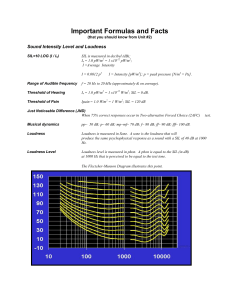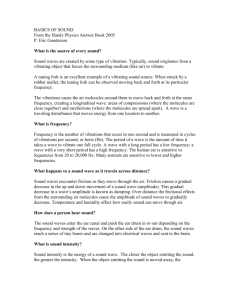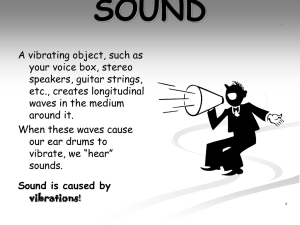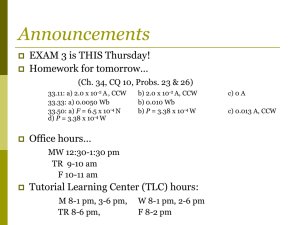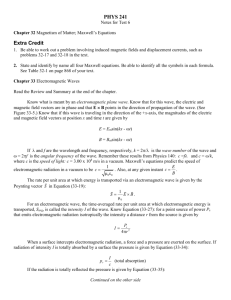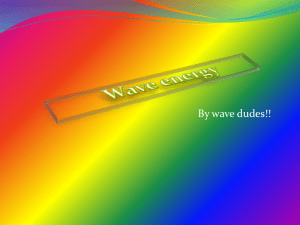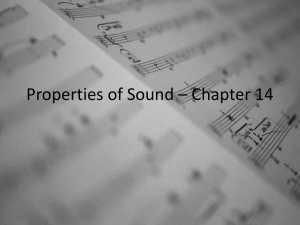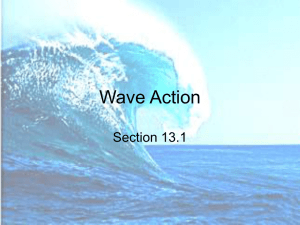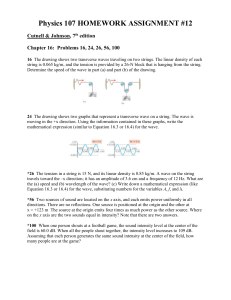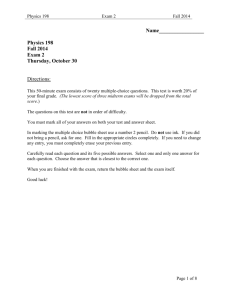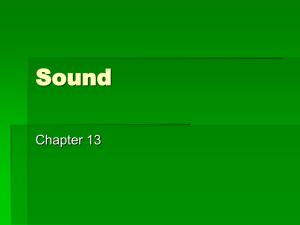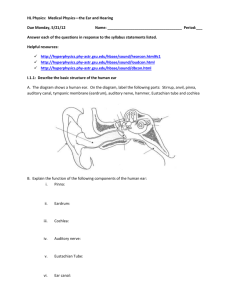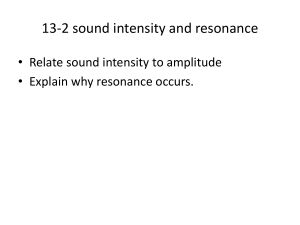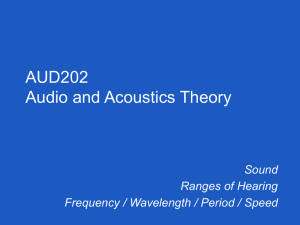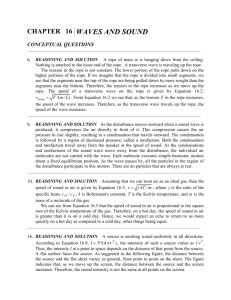Sound Waves PPT
advertisement
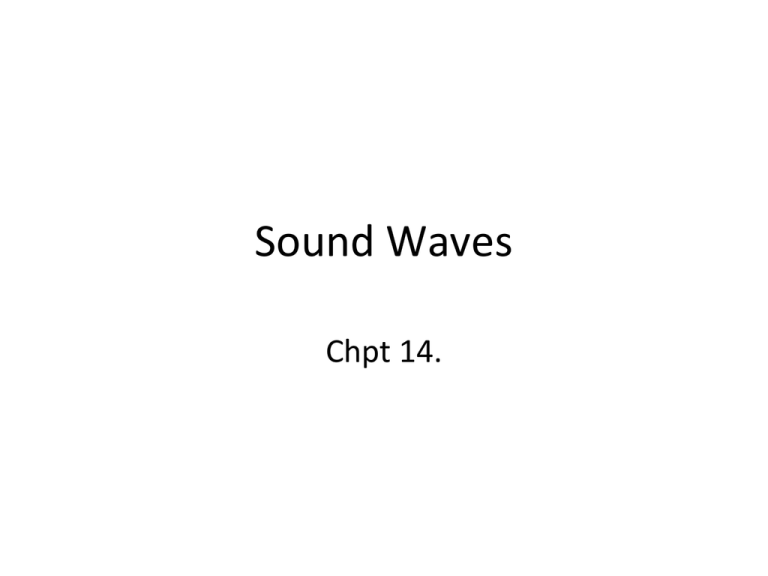
Sound Waves Chpt 14. What is sound? • Sound waves are in all fluids – Fluids are both gases and liquids • People can hear from 20 Hz- 20,000Hz • The process of hearing is an intricate procedure. The Amazing Ear • There are sounds outside the limits of human hearing • Infrasonic: sounds with frequencies lower than 20 Hz – Ex: Earthquakes, wind, weather, elephants, cattle • Ultrasonic: sounds with frequencies higher than 20,000 Hz. – Dogs <45,000 Hz – Cats <70,000 Hz – Bats <100,000 Hz Test Your Range! • http://www.jetcityorange.com/dog-whistle/ Speed of Sound in Different Materials Material m/s Air (0°ͦ) 331 Air (20°) 343 Helium (0°) 972 Water (25°) 1493 Seawater (25°) 1533 Copper (25°) 3560 Iron (25°) 5130 • Find the wavelength in air at 20° C of an 18 Hz sound wave, which is one of the lowest frequencies that is detectable by the human ear. • What is the wavelength of an 18 Hz sound wave in seawater at 25°C? • Find the frequency of a sound wave moving through iron at 25°C with a wavelength of 1.25m. • A 2280 Hz sound wave has a wavelength of 0.655m in an unknown medium. Identify the medium • Think of a string attached to a clamp on one end and the other moves up and down, like an oscillation. • If the string is vibrated at the right frequency a standing wave appears – A standing wave looks like it’s not moving Standing Wave Patterns •The area where the wave is “tall” are areas of constructive interference •The areas where it looks like a “point” are areas of deconstructive interference • When complete destructive What Does a Standing Wave Look Like? • The Tacoma Narrows Bridge was a bridge that Open Air Columns • Many musical instruments are made up of air column in metal tubes. • Extra long tubes are bent back on top of each other • Flutes and organs are examples • If each end of the pipe is open at both ends, each end is an antinode. Natural Frequencies • Natural frequencies are know as harmonics of the instruments • There are standing wave patterns • If both ends of the tube are open it is a openpipe resonator – Ex: Trumpet, Speed of Sound • The speed of sound can change based on the medium and the temperature it is propagating through. v = (331 + 0.6Tc) V = velocity (m/s) T = the air temperature in degrees Celsius • Ex: On a cool October afternoon (air temp = 15 degrees) your seat on the centerfield stands 113m from first base, you watch a play at the World Series. You see the runner’s foot tag the base, half a second later you hear a baseman’s glove hit the base. Is he safe or out? • Sound is Intense! • Intensity: the rate of energy transfer for a given time over a given area. I = P/A = P/ (4ΠR2) • The intensity of a point source of sound is inversely proportional to the square of the distance from the source • With this in mind: • Sound intensity is perceived as loudness. • Threshold of Hearing (I0): a sound wave at 1KHz with an intensity of 10-12 W/m2 • Threshold of Pain (Ip): a sound wave with an intensity of 1 W/m2. At this point the sound is uncomfortably loud and may be painful to the ear • Decibel (0.1 bel) named after A. Graham Bell • Sound Intensity or decibel level (β): β = 10 log I I0 where I0 = 10-12 W/m2 • What unit have you typically heard of for sound? • See pg 488 Example 14.4 Logarithmic Sound Intensity Levels Sound Levels and Damage Exposure • You can damage hearing by excessive noise • Turn to page 491 and look at table 14.2 for exposure time and intensities • Ex: A 10 W speaker emits sound at full power. What is the intensity 5.5m away? • Find the relative intensity of the sound. • If a rock band is playing at 92 dB, find the intensity of the sound. • Ex: What is the distance from a lightning strike in 20C weather of you hear thunder 3.5 s after the strike? • Hmwk! • Pg 508 #1, 10-13, 16, 20, 29, 30, 32, 35,36, 37b, 38

